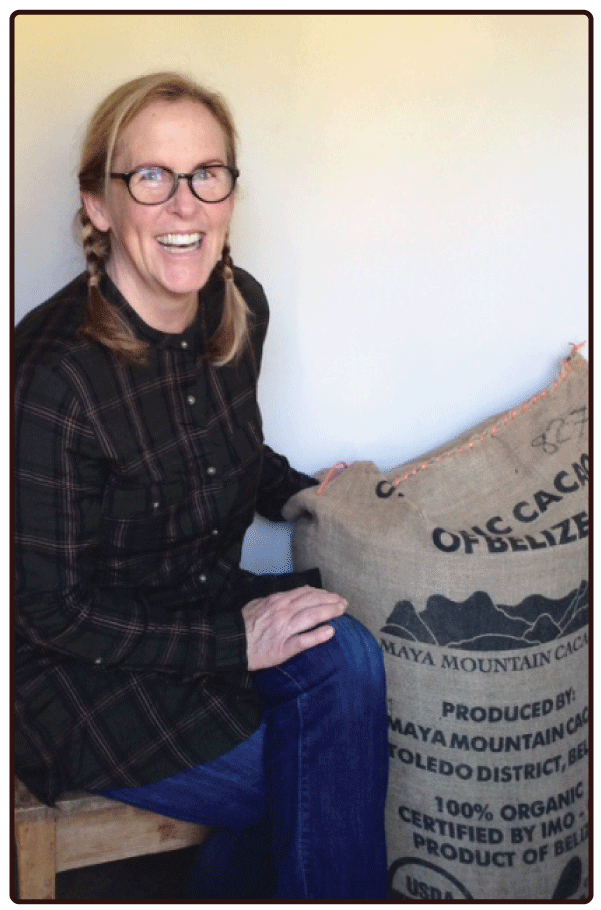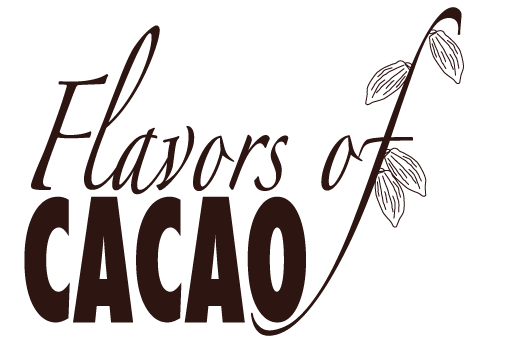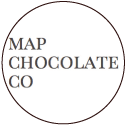 This response we hear from Mackenzie Rivers of Map Chocolate, a small batch chocolate company in Eugene, Oregon. This is the part of the column where we usually introduce the maker. However Mackenzie is so fascinating we thought we’d use her own words to describe herself. Not only is she a creative chocolate maker, she is also a creative writer. In her own words: “I've pickled grape leaves in the grand canyon, lived on a sailboat, made apple butter when i should have been studying, and cut my hair with a swiss army knife, but i never knew i could make my own chocolate.
This response we hear from Mackenzie Rivers of Map Chocolate, a small batch chocolate company in Eugene, Oregon. This is the part of the column where we usually introduce the maker. However Mackenzie is so fascinating we thought we’d use her own words to describe herself. Not only is she a creative chocolate maker, she is also a creative writer. In her own words: “I've pickled grape leaves in the grand canyon, lived on a sailboat, made apple butter when i should have been studying, and cut my hair with a swiss army knife, but i never knew i could make my own chocolate.
I should tell you right now that i believe in chocolate. as a food group, as a stand-in for the day when your best friend is MIA, as a breakfast food, as a bartering tool when words are not enough, as a currency of kindness, and as a thread wrapping around the world.”
Here’s what Mackenzie shared with us for the column:
“Long before I was a chocolate maker I was a river guide on the Colorado River through Grand Canyon. Adventurous, yes. Sunny days, moonlit nights, and unbelievable beauty in one of the world's great wonders? All that, too.
If the Grand Canyon taught me anything it's that before there can be Big it all starts with small: rain droplets become tiny trickles that grow into raging rivers, small clefts in rock crack deeper to become canyons, one step begins a journey, and then, becomes a lifetime. In chocolate it is no different: it all begins with a lowly, nondescript, downright homely, small bean.
Where we begin our journey as craft chocolate makers is also this place of small. Yet, like any new adventure the excitement of learning the skills of making chocolate can easily overshadow the bean part of the equation. And this is only natural, as the chocolate maker's goal is transformation: take B and end up with C. The end result, if done right, is of course a delicious culinary miracle. The processes of getting there offer a fantastic landscape with much to explore: roasting and it's many profiles, temperatures, and theories; winnowing and sorting; the melanging, conching, and aging steps that come with no set formulation, recipe, or precise how-to manual but more often, maker's "secrets" that leave anyone new to the bean to bar road in the dark; tempering and molding that can cause even the seasoned chocolatier to stumble. Each step screams for attention, and when it doesn't go as planned, pokes a well-timed prickly jab at our Know It all side, reminding us that no matter how far we've come, it is in fact at the bean where it all began; and no matter how far we travel, it is the bean that will have the most to tell us.
When I decided to craft my first batch of chocolate I did not know a Camino Verde from a Peru Tumbes. I had no notion of what Forestero implied, what history Criollo hinted toward, or how a Madagascar might differ from a Cuyagua. All of that was a language I did not understand, no matter how much I read or how many questions I asked; what I read or was told only described what I had yet to experience for myself. I started, not because I ate some really amazing chocolate, but because I walked into a warehouse that smelled of every chocolate dream I'd ever had. And when I opened my eyes (both metaphorically and literally; as we lovers of chocolate know, the aroma has the knack of getting us to close our eyes, breath deeply, and sigh), what I saw were beans.
Not just a bean, but stacks of jute sacks and a room of barrels, each filled with different origins of beans. Twenty-five different origins, to be exact. At the time this was both revelatory and made no sense. Chocolate came from cacao beans in a simple (or so I thought) equation: beans + whatever it took to make it = chocolate, with the "whatever it took" part a precipice I'd yet to reach. All beginnings are a question: what shall I be? Where shall I go, how close, how far, how will I get there. For the craft chocolate maker the question of where to begin leads straight to a cliff edge of choice of many beans, and each bean, to a leap in a new direction.
I told myself it would be like learning to row a boat. By rowing, I mean navigating the river by handling the oars, steering the best course, hefting hard when the wind blows upstream, and understanding in the face of a towering wave when to give it my all, and then some. The river flows downstream but that's where the easy part ends: rocks, steep drops, tsunamis of whitewater, waves looming so high they block the sky, the roar of rapids like 747s revving for take off, and eddies and swirls of current all clamor, call for attention and demand a response. Which is not the same as learning to read the water: yanking hard on the oars because all hell broke loose is river guiding triage, but knowing how to avoid said hell, understanding what the river is saying in a language of ripples, waves pulsing and building, seams of current and ridges where the horizon line ends, is an alchemical blend of artistry and fluency. Reading water is how we understand what that teensy lip curl of a wave is saying (hidden boat-ripper rock too close for comfort) and what the smooth glossy hump of current hides (bigger rock but down deep). Conversing with the river took time; rowing the boat was how I studied the language.
And so I began listening to cacao beans. And while I listened I began making chocolate. A Peru Tumbes and her distant cousin a Peru Criollo had a few things to say about how different two beans of a single origin can be. I roasted both for the same amount of time, at the same roasting profile in a drum roaster. I crafted both at 75%, and conched the same amount of time. The Tumbes began with what my grandmother would have called back talk, with a bit of a bite and a sour attitude that eventually mellowed. The other Peru had a similar zing at the start that intensified in a horrifying shock of tang then blossomed, a yang to the Tumbes' yin. They spoke directly to the concept of terroir, the differences in flavor profile due to soil and environment and climate, but just as wonderfully, of farming preferences that vary from region to region, and how entire communities inevitably reside within a bean. More importantly, they corrected my naive misunderstanding of the “single" in single origin as implying one type of bean and only one type of bean: crowdsourcing according to cacao is not just a method of amassing beans from many different farms to facilitate trade, but is the inherent nature of a cross-pollinating happy cacao tree.
A Camino Verde Ecuador said loads about depth, intensity, and what happens when we over roast (it spoke in no uncertain terms about this) with an acrid lesson in the concept of one size fits all: a roast is as individual as the bean, and each origin has its own window of opportunity for the best use of heat. The only way to learn this is to roast, to listen, and to smell. Wisdom holds in bean roasting to listen for the pops; in my neophyte's thinking if a few pops were good, then more must be even better. The charred hamburger smell was not only a first hint I'd pushed the roast too far, but because the next several roasts I flinched with the first pop it lead me to understand how the converse of roasting has its version to tell: not enough heat renders the bean mute, and the secrets sheaved between layers of acidity do not have a chance to speak their truth. Camino Verde is notoriously dubbed "viscous," which, by a one-sided conversation while hand tempering I learned meant stubborn as a mule when it comes to temperature range for crystallization, but like a trusty if not independent mule, knows the best route each time, and with a light hand and less rigorous stirring (and me keeping my mouth shut and paying close attention) will lead to the beautifully tempered promise land.
A friendly Belize seemed to whisper You can do this on the day I reached the confluence of How Everyone Says to Do It and the small, nearly hidden side path of Stop When You Decide It Tastes Great, which eventually leads to Do It All Your Own Way. What I'd heard was that chocolate requires a long time conching. The beans had smelled lovely during the roast. They'd smelled lovelier during the initial grind. They tasted great from the get-go. While I wanted to pat myself on the back for my newfound roasting prowess (see: screw ups with Ecuador) what I began to understand was that long before the roast there was the ferment.
Finally, Tanzania woke me to the notion that while some beans converse in bold, authoritative Chocolate-speak, there are those that can be lively and bright and sing, and not the same song to everyone within listening distance. When other makers found plum or cherry with Tanzania, I heard softer warbles of rose and tea, and the how each maker might not just taste different notes, but on our best days might coax a beautiful song waiting to be heard.
A Honduran bean, well off the radar of It bean prominence arrived without fanfare in a small 50 pound sack. Every bean was beautifully clean, albeit without a promising scent. Some beans are like that: with cacao it is, as the saying goes, what's on the inside. During the roast it spoke of patience, with timid pops toward the end. Sadly, we are not a culture of patience, or timidity, or wait and see. After winnowing, the nibs were not remarkable. But somewhere during conching it began to speak, in a slow rise of aroma and wafts of caramel and what can only be described as salt air just when the sun begins to set; the kinds of things that seem a throw back and also, something fresh and new. It spoke of how, long before the bean ever falls into the hands of the chocolate maker, the truth of the cocoon has begun to emerge: we makers cradle this truth that has been passed to us in our hands, hold it to our ear, and if we listen closely, just might hear the sea.
Cacao, for all our grocery store candy aisle indifference, for the exalted prominence at the finale of a fine meal or ensconced in a glass case like the sensual edible jewel it can be, for all those bars we nibble, is a changeling in the midst of taking flight. We who make craft chocolate like to think we have a hand in the metamorphosis, that it is by our skill and craft and fine-tuned touch that what the cacao is meant to be comes into being. But maybe we're just listeners, and by being willing to listen to individual origins we can learn to speak the language, then pass along a story in the making.
On the river we know where we're going because downstream is the only option. But how we get there (and who rides with us) is where the fun and adventure comes in. Starting out as a craft chocolate maker it is easy to think and hope where we're headed is to making good chocolate, but if it ends well the journey takes us back where we began, to the bean. What we'll find on the way is the unexpected and beautiful part of it all, recounted by the timeless language of chocolate that, happily for us, has no need for words.”
Mackenzie

